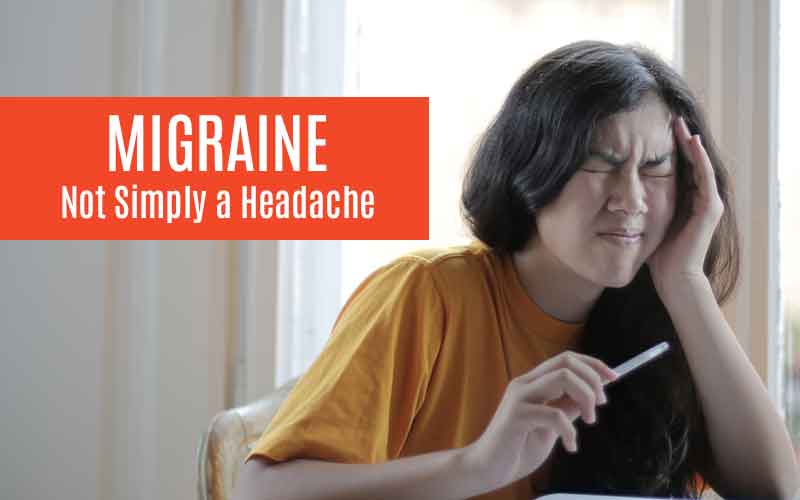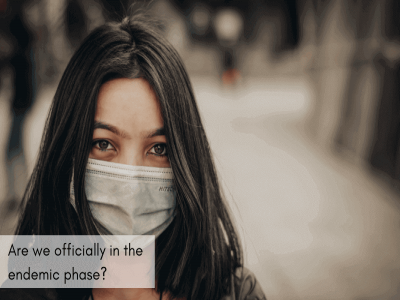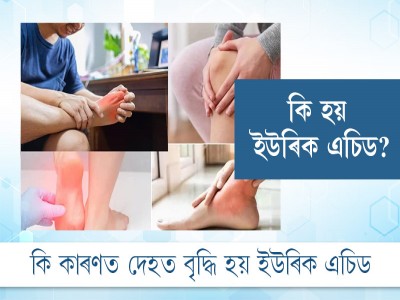
Migraine - Not Simply a Headache
It’s your day off, and you’ve a nice road trip planned with your friends. You experience a sudden throbbing pain in your head - you ignore it, thinking it will subside eventually, and carry on with your plan. However, after finishing a hearty meal at a stopover, the throbbing sensation returns; this time it is accompanied by a stronger headache.
Have you faced a similar episode, or wondering what it could be? Headaches such as this are known as migraines. Despite being a common issue faced by many, migraine remains one of the overlooked diseases in our nation.
Let’s explore the symptoms of migraine, treatment options and alternate cure for this recurring ‘pain in the head’.
History & Overview -
Migraine is a severe neurological disorder that causes throbbing pain on one side of the head. It is frequently associated with nausea, vomiting, and excessive light and sound sensitivity. Migraine attacks can persist for hours or days, and the pain can be severe enough to interfere with daily chores.
The term migraine comes from the Latin word "hemicrania," which means "half-head." The Eber papyrus (Egyptian Medical Scriptures), written in ancient Egypt circa 1500 BCE, was thought to include the first mention of migraine-related symptoms.
Aretaeus of Cappadocia, a well-known Greek physician, distinguished three types of headache: cephalalgic, cephalea, and heterocrania. Another well-known Greek physician, Galen of Pergamon, coined the term "hemicrania," from which the word migraine derived its name.
Trepanation, a procedure of creating a hole through the surface of the skull to the brain, was previously used to treat a variety of medical ailments, including headaches.
While countless migraine therapies have been attempted, it was not until 1868 that the usage of a chemical that eventually turned out to be effective began. This substance was the fungus ergot, from which ergotamine (an ergot alkaloid drug used to treat or prevent migraine or cluster headache) was discovered in 1918.
Types of Migraine
There are different classifications of migraines. Some of them are as follows:
~ Migraine with aura (sensory disturbance) also known as complicated migraine: An aura is experienced by 15% to 20% of those who suffer from migraine headaches.
~ Migraine without aura (common migraine): This type of severe migraine occurs without the warning that an aura might have.
~ Migraine without head pain: “Silent migraine” or “acephalgic migraine,” as this type is also known as, includes the aura symptom but not the headache that typically follows.
~ Hemiplegic Migraine : There is a short period of weakness or paralysis on one side.
~Chronic migraine: A migraine that occurs at least 15 days a month is considered chronic.
~Ophthalmic migraine: This is also known as an ocular migraine or a retinal migraine. It causes temporary, partial, or total vision loss in one eye, as well as a dull ache behind the eye that may spread to the rest of the head.
Signs & Symptoms of Migraine
Although migraine symptoms include primarily severe headaches, they can differ from individual to individual. The intensity of the pain, the intensity of the headache, and the frequency of attacks all differ.
The symptoms may be divided into four categories -
> The prodrome, which occurs hours or days before the headache: You may notice subtle symptoms of an upcoming migraine before it starts:
- Constipation
- Mood changes, from depression to euphoria
- Food cravings
- Neck stiffness
- Increased urination
- Fluid retention
- Frequent yawning
> The aura, which immediately precedes the headache: Examples of migraine auras include:
- Visual phenomena, such as seeing various shapes, bright spots or flashes of light
- Vision loss
- Pins and needles sensations in an arm or leg
- Weakness or numbness in the face or one side of the body
- Difficulty speaking
> The pain phase, also known as headache phase: The symptoms might include
- Pain on one side of the brain
- Throbbing Pain
- Sensitivity to light, sound, and sometimes smell and touch
- Nausea and vomiting
> The postdrome, the effects experienced following the end of a migraine attack : You may feel fatigued, confused, and washed out for up to a day after a migraine attack. Some people claim to be elated. A sudden head movement may temporarily reactivate the pain..
Migraine Triggers
Some of the very common types of migraine triggers are -
> Hormonal Change
> Stress
> Foods
> High or too low caffeine
> Some medications
> Senses (sound, light)
> Alcohol & Tobacco
Home Remedies
There are multiple migraine household therapies. However, not all of the solutions are effective for all types of migraines. But don't worry, we've compiled a list of some of the best cures for relieving and managing with pain. The points are as follows:-
1. Exercise or Yoga -Although I hate stretching my entire spinal cord, believe me it is the only technique that can completely relieve your discomfort. It not only helps you cope with pain, but it also protects your entire health, which contributes to a better neurological order.
2. Magnesium :It may sound like we're in a chemistry lab, but magnesium is a plentiful component found in bone. Magnesium is essential for many bodily functions, including muscle and neuron function and energy production. Magnesium-rich foods such as eggs, oatmeal, almonds, milk, peanut butter, and cashews may help relieve migraine discomfort.
3. Stress Management -Stress is the prime cause of all of our problems, whether physical or emotional. Meditation, deep breathing, music therapy, discipline, and other stress management techniques are often used.
4. Hydration: Undoubtedly one of the most key causes to have a healthy lifestyle is to stay hydrated. Water is extremely crucial, and staying hydrated results in higher brain understanding and performance.
5. Temperature Therapy - If you've a headache that is becoming worse, applying a pack of hot or cold compresses may help. Tense muscles can be relieved using hot packs and heating pads. Warm showers or baths may also have the same effect.
The Bottom Line -
If you are suffering from migraines, you are well aware of how difficult the symptoms can be. You may miss work or be unable to participate in activities you enjoy. However, the therapies listed above may provide some help.
If the condition deteriorate over time, it is best to visit a specialist so that the appropriate treatment may be taken at the appropriate moment. There are numerous neurologists and neurosurgeons available to assist people in resolving their neurological concerns.
Dr. Kishore Kr. Sarma and Dr. Hriday Haloi of Neurocare Assam (a social media page) are among the finest doctors in this profession. Their areas of specialty include brain trauma, spine surgery, brain tumour surgery, neurovascular surgery, stroke surgery, and paediatric neurosurgery.
They have assisted various people suffering from migraines and other neurological disorders. They also provide free tele-consultations and online booking. For additional information, visit www.neurocareassam.com
Disclaimer: The opinions expressed in this article are those of the author's. They do not purport to reflect the opinions or views of The Critical Script or its editor.

Newsletter!!!
Subscribe to our weekly Newsletter and stay tuned.

















Related Comments